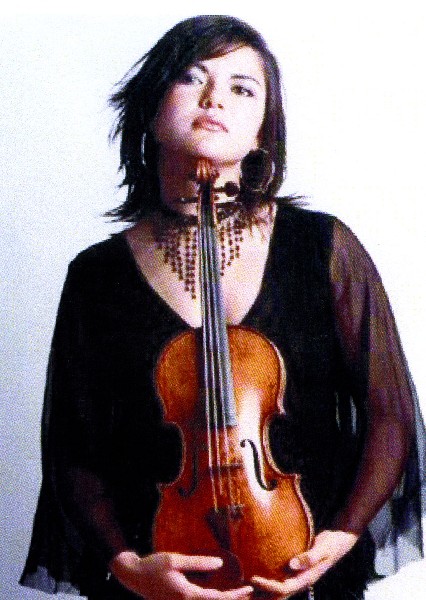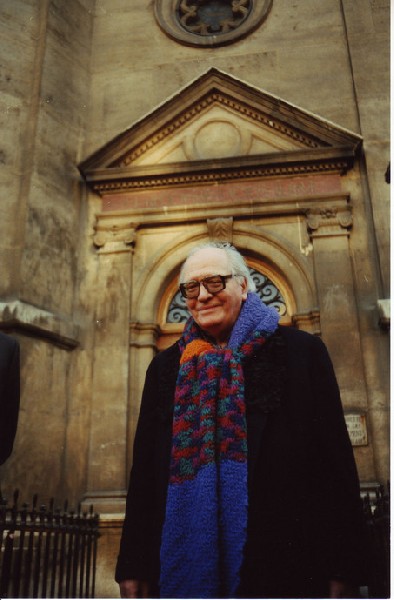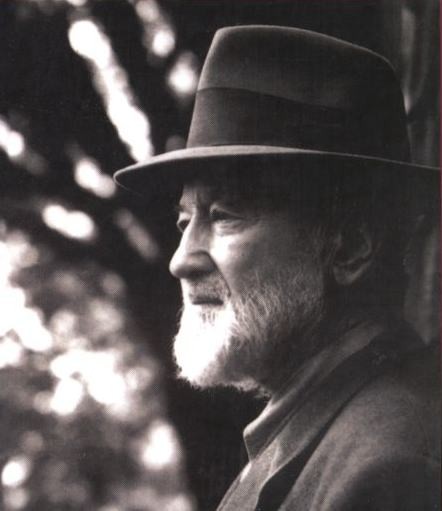The New York Philharmonic at St. John the Divine
Memorial Day concert
By: Susan Hall - May 26, 2009
The New York Philharmonic at St. John the Divine in New York on Memorial Day performed works composed largely by men who were soldiers and survived. The most profoundly religious piece was a "symphonic meditation" by Olivier Messiaen, a prisoner of war for two years. The Dean of the Cathedral remarked in an introduction: "Across time art speaks." The anguish of war, lives lost and society's mettle tested to its breaking point all could be heard musically expressed in this Memorial Day program.
Memorial Day is a day for dirges, for pleadings to a higher power for peace, for honor and military bands. This New York Philharmonic event also heralds summer and concerts performed out of doors -- in this case, like the Tanglewood shed, spilling out of the protective venue of St. John the Divine onto the surrounding grounds, where the concert is amplified.
A small group of Philharmonic musicians first performed Charles Ives' "The Unanswered Question," an eight minute piece considered one of the most modern compositions when its first draft was written around 1906.
Ives, who was born in the foothills of the Berkshires, succeeded in graduating from Yale with a D+ average and went on, like the poet Wallace Stevens, to work in a day job for an insurance company while he composed in his down time. "The Unanswered Question" was sketched in 1906, developed in the 1930s and finally completed in 1941. It was first performed near St. John the Divine at Columbia University by a Juilliard chamber orchestra.
Strings with lovely brief melodic lines indicate a profound, unknowable sphere; a trumpet breaks in to ask questions to which the flutes try to respond. In the end the flutes, out of frustration, simply mock the trumpet. The final question posed by the trumpet is answered by the strings unanswerability, but with a melodic line caught here and there. Conductor David Robertson was able to bring forth a yearning which I hadn't caught before. "The Unanswered Question" is a calm reflection: No one has yet come up with an answer to Â…?
If Samuel Barber's "Adagio for Strings" were not so absolutely beautiful it might be considered a warhorse, often performed at funerals of heads of state like Franklin Delano Roosevelt and John F. Kennedy, and even in the movie "Platoon." The "Adagio" started life as a movement of Barber's Opus 11 string quartet, which Barber then expanded for a string orchestra. When he completed the adagio movement, Barber wrote a friend, "I have just finished the slow movement of my quartet today — it is a knockout!" That it is.
Before he traveled to Europe for a summer of work in June 1938, Barber sent Arturo Toscanini two works, one of them the "Adagio for Strings." A year before, Barber and his partner Gian Carlo Menotti had decided to pay a call on Toscanini at his home on an island in Lake Maggiore. They walked up the rocky cliffs to his house, where they asked for Mrs. Toscanini (they did not want to disturb the Maestro). Shortly the Maestro himself appeared and said that Mrs. Toscanini was too busy but wouldn't they come in for tea? That first meeting prompted many other invitations to dinner.
In the summer of 1938, Menotti arrived alone and pleaded illness as the cause of Barber's absence. The Maestro grinned: "Oh, he's perfectly well. He's just angry with me, but he has no reason to be. I'm going to do both his pieces." "Adagio for Strings" debuted in 1938 with the NBC Symphony Orchestra. Some say that it is the most beautiful of all the Toscanini performances.
This evening, under David Robertson, the "Adagio" majesty was enhanced by the Cathedral's acoustics. A very slow and extended melody is built from intervals in steps. Slight variations crop up in its numerous repetitions over sustained chords that change subtly note-by-note, building to a powerful climax and then receding rapidly to quiet. Nothing can explain the profoundly moving punch to the gut this piece delivers – melodic line, repetitions, intervals, a broth specially concocted by Barber.
Barber was inducted into the Army during the Second World War. Because his eyesight was poor, he spent his time moving musical instruments from post to post. He was asked to compose by an unusually enlightened command. The "Symphony Dedicated to the Army Air Forces," premiered with the Boston Symphony under Serge Koussevitsky and was decried as "too traditional" by Barber's commanding officer, who said at the time, "...the Army Air Forces employ all the latest technical developments in military flying so the symphony should be equally up to date." A Chinese Corporal wrote Barber, "I heard the symphony and disliked it intensely, but I applauded hard because I think all corporals should be encouraged."
The performance by Karen Gomyo in Vaughn Williams' "The Lark Ascending" was even more arresting and glamorous than the performer, a young woman burnished by her awards. Gomyo reminds us that the violin's expression if closest to the human voice, and the long lines, soaring and decorated with trills, were exquisitely executed.
Inspired by a George Meredith poem, Williams composed the piece before the First World War, and after serving for four years in the military, revised it on his return home. To the lyricism of the pre-War version some musical darkness is added, but the piece remains serene, with none of the flourish of the Edwardian period or the acid tinkling of many post war composers. Vaughn Williams rethought his musical idiom after the war but did not join the smart set of composers.
From the overarching point of view of the lark -- violin, the world looks beautiful, where down on the ground, man slugs away in ugly enterprises. We get a kind of plodding numbness in the musical background. In the end, the lark departs, soaring upward, heaven-ward?
For two years, Olivier Messiaen served as a medical auxiliary during World War II and for two years he was a prisoner of war. "L'Ascension" was his fourth orchestral work and like the composer himself, has a profoundly religious bent -- it poses as a meditation on divine majesty. The opening movement, "Majesty of Christ Requesting Glory from His Father", carries text from the Gospel of St. John "Father, the hour is come; glorify Your son, so that Your son might glorify You," perhaps chosen as a tip of the hat to the Cathedral where it was performed. In the finale, the first violins play the principal melody, but they are instructed to use mutes. All the instruments are asked to play with a very full vibrato and to dedicate an entire stroke of the bow to each note. The first violins' melody is ethereal and other-worldly, while the accompanying chords are earthbound, with more of a sense of earthiness than there was in the Vaughn Williams. David Robertson was able to bring forward an intoxicating mix of anguish, horror, transcendence and beauty in this piece, which often used harsh melodics and uncomfortable intervals to achieve its ascendant goal.
A short, densely packed evening at the Cathedral, honoring those who died at war, with the New York Philharmonic playing pieces by those who survived – even more moving because the setting was a Cathedral.







